The next day we set off for Glastonbury to see the ruined abbey and Chalice Wells. We had each been to both many years before, but it felt like time for another visit. This small town, less than twenty miles from Cheddar, is located on what is called the Somerset Levels, which is a flat plain and wetland area. At last count, it had a population of about 9,000, and has been inhabited since Neolithic times. A road known as the Sweet Track, originally laid with a timber trackway, was dated to be at least 6,000 years old, and built in 3807-3806 BCE, which makes it one of the oldest built roads in the world. The name Glastonbury is Old English and possibly comes from a name “Glas son of Cas” meaning “green,” “ton” meaning a settlement, and “bury” from burg, a monastic enclosure. The area was known as “Glastonbury of the Gaels” to the Irish, who settled there.
Glastonbury Abbey claims to have developed from an ‘Old Church.’ There is firm historical evidence for an early church on this site and archaeological evidence for a settlement at Glastonbury Abbey around 500 CE. Anglo-Saxon buildings of the 5th or 6th century were timber-framed with panels of wattle. This was made by interweaving wooden rods sealed with clay, or mud mixed with straw, and they were roofed with thatch.
King Ine of Wessex endowed the monks financially and directed that a stone church be built in 712, the foundations of which form the west end of the nave. In the 10th century, Abbot Dunstan, who instituted the Benedictine Rule at Glastonbury, enlarged the church, built the cloisters, and later became the Archbishop of Canterbury. During this time, the Glastonbury Canal was built to transport stone to build on to the abbey, and this waterway opened up trade along the river. In 1026, this increased the wealth of Glastonbury. After a successive round of new abbots, each adding on to the church, Glastonbury Abbey became the richest monastery in the country. This is when Abbot Henry of Blois commissioned William of Malmesbury to write the history of Glastonbury.
William of Malmesbury, an English historian of the 12th century, was highly educated and read hundreds of histories. He wrote two popular accounts in 1125. One of English history, about the deeds of its kings; and the second, on the deeds of its bishops, wherein he writes about Glastonbury. He described Glastonbury’s ancient “brushwood” church. He suggested that missionaries founded it in 166 CE. “The church at Glastonbury… is the oldest of all those that I know of in England. In it are preserved the bodily remains of many saints, and there is no part of the church that is without the ashes of the blessed. The stone-paved floor, the sides of the altar, the very altar itself, above and within, are filled with relics close-packed. Deservedly indeed is the repository of so many saints said to be a heavenly shrine on earth.” His work On the Antiquity of the Glastonese Church was compiled sometime between 1129 and 1139 as part of a campaign to establish the abbey’s primacy against Westminster.
In 1184, a fire destroyed the Old Church. As well, archaeologists speculate that the connection with King Arthur and Guinevere, who were believed to have lived and were buried in Glastonbury in the 5th century, was created deliberately by monks in 1184 to bring in pilgrims with money to support the church’s needs after the fire. In 1193, a man named Giraldus Cambrensis reported that Abbot Henry de Sully commissioned a search for their graves. Sixteen feet down, a massive hollow oak trunk was found, containing two skeletons. Above it, under the covering stone, was a lead cross with the inscription: “Hic jacet sepultus inclitus rex Arturius in insula Avalonia” (“Here lies interred the famous King Arthur on the Isle of Avalon”). It was said that the spot lay between two pyramids in the abbey. Malmesbury does not mention Arthur’s tomb, but he does mention the pyramids. Their graves, supposedly placed in the Lady Chapel, were explored in modern times by archaeologists. The area did contain material that dated between the 11th and 15th centuries, but that neither substantiates nor rejects their existence and Cambrensis’ report was secondary hearsay.
In September 1539, after Henry VIII declared the Dissolution of the Monasteries, Richard Layton, Richard Pollard, and Thomas Moyle visited the abbey, under orders from Thomas Cromwell. As the abbey was known to have large amounts of silver and gold, they stripped the abbey of its valuables. The abbey was also stripped of lead, its dressed stones hauled away, and it reverted to the crown. Abbot Richard Whiting was hung, drawn, and quartered as a traitor on Glastonbury Tor in November of 1539. Later, the site was granted by Edward VI to Edward Seymour, 1st Duke of Somerset, who established a colony of Protestant Dutch weavers on the site. In 1559, Elizabeth I of England granted the site to Peter Carew, and it remained in private ownership until the beginning of the 20th century.
There are many legends that have to do with Glastonbury. Here are two. The 14th-century monks claimed that the Old Church was founded by Joseph of Arimathea in the year 63 CE. According to the Bible, Joseph was the man who gave Jesus his tomb and collected the blood of Jesus when on the cross into a cup. Joseph of Arimathea was said to have arrived by boat over the flooded Somerset Levels. He disembarked, stuck his staff from a Holy Thorn tree into the ground and it flowered miraculously, which is where the church was to be built. A thorn tree has been planted on the property, ever since.
It is said that Joseph brought the Holy Grail with him to Glastonbury. This inspired the Lancelot-Grail Cycle of stories, which were interconnected prose episodes of a chivalric romance written in Old French, about King Arthur and all the tales we know about Lancelot, Guinevere, Merlin, and the Holy Grail. There is also the legend about Glastonbury Tor. One tale from Druid mythology tells of Saint Patrick being summoned by the King of the Fairies to the summit of a large hill above the village. A mansion of glass was revealed to him to receive the spirits of the dead. This is why the Church of Saint Michael was built on the hill. Little more than one tower is all that remains.
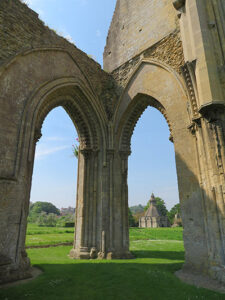 The ruins of Glastonbury Abbey, along with its Lady Chapel, sit on thirty-six acres of parkland. It is approached by the abbey gatehouse, which was built in the mid-14th century and completely restored in 1810. The great church was 220 feet in length and 45 feet wide. The choir was 155 feet long and the transept was 160 feet long. St Joseph’s chapel was 110 feet long and 24 feet wide. Other fragments of structures which remain include portions of the outer walls of the chancel aisles and the 14th century retrochoir, which is the space behind the high altar. There is also surviving stonework from the south nave aisle wall, west front, and the Galilee along with its crypt linked to St Mary’s Chapel.
The ruins of Glastonbury Abbey, along with its Lady Chapel, sit on thirty-six acres of parkland. It is approached by the abbey gatehouse, which was built in the mid-14th century and completely restored in 1810. The great church was 220 feet in length and 45 feet wide. The choir was 155 feet long and the transept was 160 feet long. St Joseph’s chapel was 110 feet long and 24 feet wide. Other fragments of structures which remain include portions of the outer walls of the chancel aisles and the 14th century retrochoir, which is the space behind the high altar. There is also surviving stonework from the south nave aisle wall, west front, and the Galilee along with its crypt linked to St Mary’s Chapel.
The Lady Chapel and the Galilee Chapel were reconstructed in the early 13th century, and portions still survive. The Lady Chapel was described in 1478 as being 34 yards in length and 8 yards wide. Eventually it became ivy-covered, and when cleared in 2014, the remaining art on the walls was conserved, the concrete floor was replaced with limestone paving, and a walkway to Saint Joseph’s well was made. The impressive carved doorway in sculptured detail illustrates the Life of the Virgin. Saint Joseph’s well is still fed by a spring in the natural rock. The arch over the well is believed to have once been a window from the lady Chapel.
When we arrived, we were able to join a small tour group, led by a woman in costume, who gave us a layout of the area, beginning in the Abbot’s Kitchen. The 14th century abbey barn retains its original medieval fabric and details. All that has been done is to repair its roof. It is open to the public as part of the Somerset Rural Life Museum. The Abbot’s Kitchen is described as “one of the best preserved medieval kitchens in Europe.” Curved buttresses support the 14th century octagonal building on each side, leading up to a cornice with grotesque gargoyles. Four large arched fireplaces are inside and the building has a pyramidal roof. The kitchen was attached to the 80 foot high abbot’s hall, although only one small section of its wall remains. Many of the things described above were told to us.
Afterward, we crossed the street to eat at a local eatery called The Market House, then we walked along High Street. We stopped in an excellent bookstore that had nothing but magical books. We went into an indoor craft room with many sellers. Someone was selling live scorpions, and the rest were handmade crafts and trinkets. There was a tiny alley across the street that also had many shops all in a row, and then we decided to get the car and go to Chalice Wells.
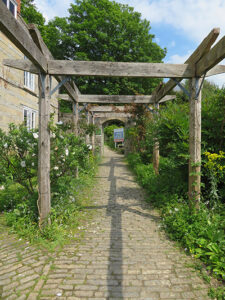 We had both been there in the early 80’s. Its old wooden pergola was still there and the stone pathway to the well, but the gardens have grown. We walked all the way to the end of the path to its slightly inclined hillside, through tall trees and shaded alcoves, where the well is located. We sat alone in the shade and thought about all the history that had passed through Glastonbury. We also drank in the peacefulness of the quiet moments that we shared there together. We eventually moved to another bench so others could sit there. Then we walked back down the path to another part of the garden, where we rinsed our hands at the Lion Spout.
We had both been there in the early 80’s. Its old wooden pergola was still there and the stone pathway to the well, but the gardens have grown. We walked all the way to the end of the path to its slightly inclined hillside, through tall trees and shaded alcoves, where the well is located. We sat alone in the shade and thought about all the history that had passed through Glastonbury. We also drank in the peacefulness of the quiet moments that we shared there together. We eventually moved to another bench so others could sit there. Then we walked back down the path to another part of the garden, where we rinsed our hands at the Lion Spout.
Then further down the path, we sat at a bench where we took off our shoes and walked in a shallow pool of the water that ran down a yellowed channel. Where the yellow/orange iron-filled water came out of the hillside, the plants that framed the water took on the shape of a woman’s body. The head where the water came out had a leafy crown, a space widened at her shoulders and became more slender down to her legs where her feet stood in the water. All was shaded, the water was icy cool on that warm day, but refreshing and invigorating. Then with our shoes back on, we went back to the entrance, where the water continued to flow into another pool. Its shallow falls fell between stones, down into rounded, shallow pools that sparkled in the sunlight.
We went into the gift shop. I bought a pair of Chalice Wells earrings, to replace the ones I had once had so long ago, and a few other things to remind us of the place. When we were done, we again sat on a bench and relaxed, watching the soothing water, reminding us of heartfelt memories of having been there before.
Walking back to the car, a couple at the entrance to the parking lot were selling ice cream from a van. I had honeycomb and Vere had strawberries and cream. Then it was back to Cheddar and the Bath Arms.
We rested and then went to dinner downstairs for our Sunday roast dinner. Vere had the roast topside of beef and I had the nut roast. Both came with roasted potatoes, greens, red cabbage, carrot and swede mash, Yorkshire pudding, and gravy. Vere also had a chocolate delice dessert with fried honeycomb. I can’t say that I enjoyed this traditional Sunday meal. Vere’s beef and the vegetable roast, both with gravy, and the creamed carrots were fine. It was all the rest that were not so good. Probably the most disappointing was the Yorkshire pudding. It was burnt and hard on the bottom, and tough on the top. They could not be eaten. These puffs of pastry should be crispy on the outside and soft and bready on the inside, eggy but not too much, slightly fatty from being baked with meat drippings, but not greasy. These were none of those things. They are not meant to have any flavor, they are simply meant to be a bread accompaniment. We ate what we could on our plates and left the rest. Then, as it was our last night in Cheddar, we made sure our bill was all paid for the week, and then we went to pack to leave early in the morning.
The next morning we were up at 7:00, as we had a long travel day. Our suitcases stood packed, so we went to the dining room for our last breakfast, but the entire place was closed up tight with no one around. So we went back to our rooms, put our suitcases in the car and walked to a bakery on the main road. We had a slight wait, but once we had downed hot drinks and croissants, we were on our way driving back to Bath and the Enterprise rent-a-car office. Thankfully, no hedgerow bramble scratches were on the vehicle when we turned the car in. With an Uber to pick us up, we found ourselves a short time later at the Bath train station waiting for our train to take us back to London.
I sat on a bench at the platform with our luggage, while Vere went to find a soda for the trip. It was still pretty early and the gray sky lay heavy, which made the morning feel a bit gloomy. Soon, a man sat down at the end of the bench, also waiting for the train. His and my attention were taken by a pair of pigeons on the roof of the train station building across the tracks. A male was courting a female with a prolonged cooing sound. Then they held each other’s beaks like a long kiss. Finally she accepted him, he mounted her so their cloacals could touch and mate. The male flapped his wings but then fell off in his exuberance. The guy next to me and I burst out laughing. I commented, “Poor thing lost his balance,” and the guy responded, “at the worst possible time.” We both laughed again. It was just a few moments in time when the unexpected sharing of something with a stranger had turned from glum to something to laugh about. I feel fairly certain that the pigeons had their time after our train pulled in and then away.
After arriving at Paddington station we got a taxi to King’s Cross, where the train we needed would be heading north to Yorkshire. While waiting for our platform to show on the departure board, we were amused to see a group of people lining up to see platform 9¾, famous of course, for where Harry Potter and other students took their train to Hogwarts, the school of magic.
We were scheduled to take the 11:56 to York, but it was running a good deal behind. When it did arrive, we finally departed a little after 1:00, and after two hours we pulled into York. There, we had to get on the other side of the tracks to exit the station, but the elevator was out of order, so we had to carry our suitcases upstairs on one side, cross a bridge over the tracks, and then carry them down the other side. While Vere was handling his suitcase ahead of me, I was behind him trying to do the same. When a man saw me struggling, he simply paused and nodded at me, and then carried my suitcase up the stairs for me. A stranger with a gift of kindness is always a surprise, and that was a most welcome one.
We stood out front trying to reach the rental car company, as they advertise that they will pick you up, but they didn’t bother to even answer their phone. We had no choice but to take a taxi. Even though it was only half a mile away, I’m glad we didn’t walk, as it was complicated getting there across many sets of train tracks, a lot of street construction and it was uphill. But we finally got to Enterprise and got our next car for the second week of our trip.

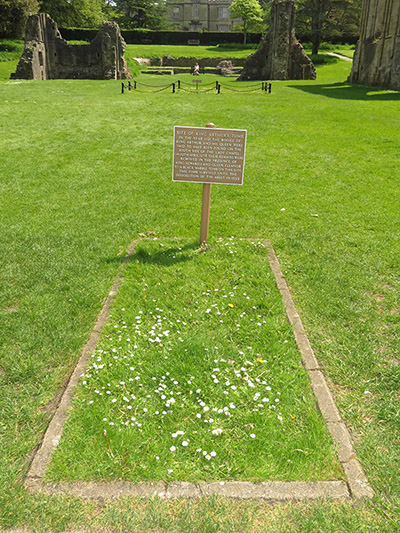
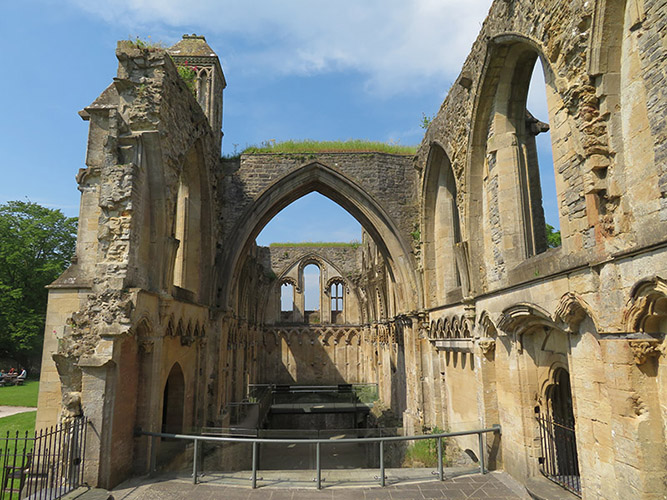
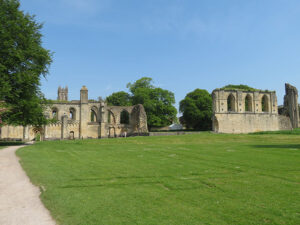
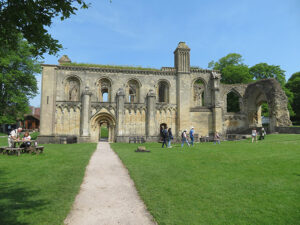
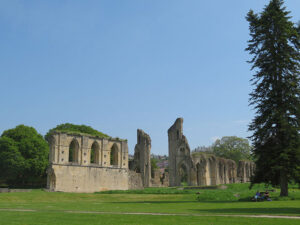

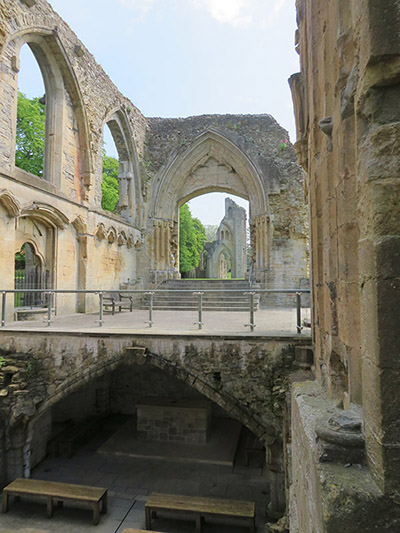
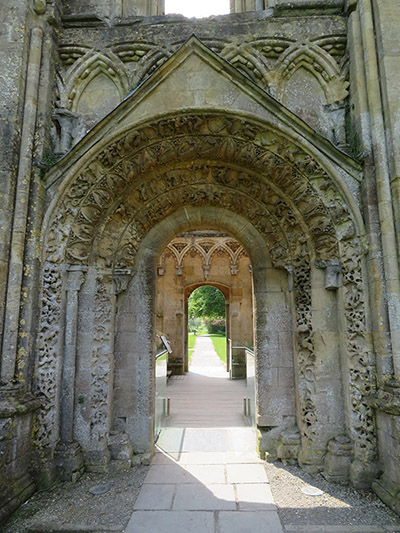

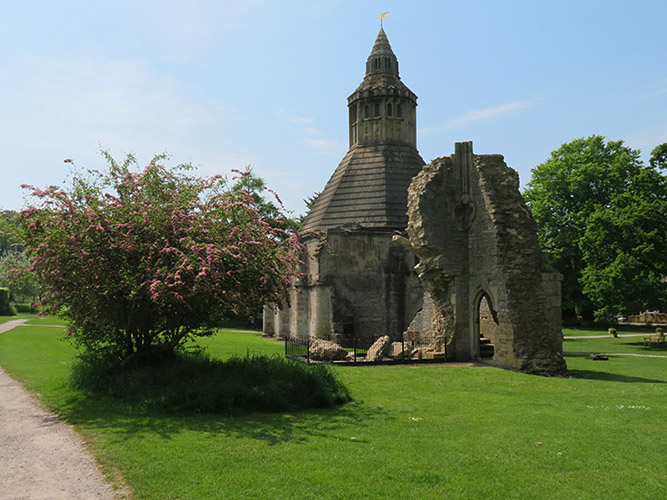

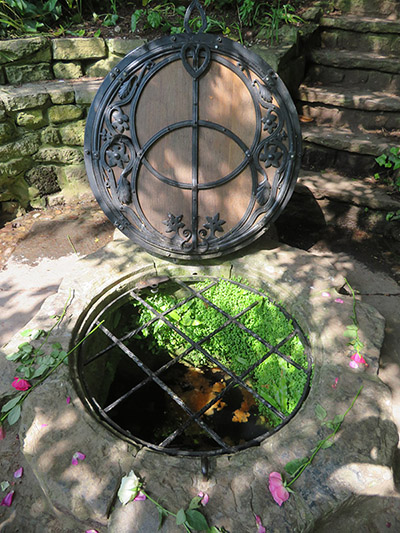
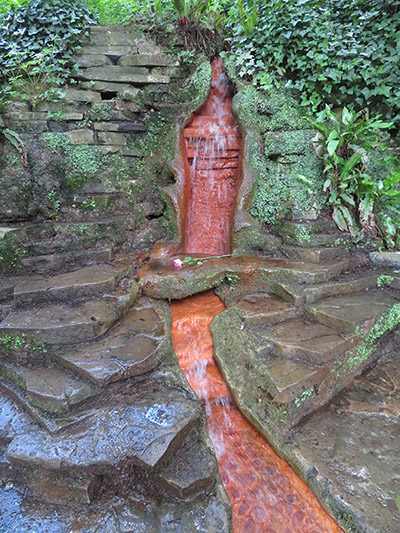
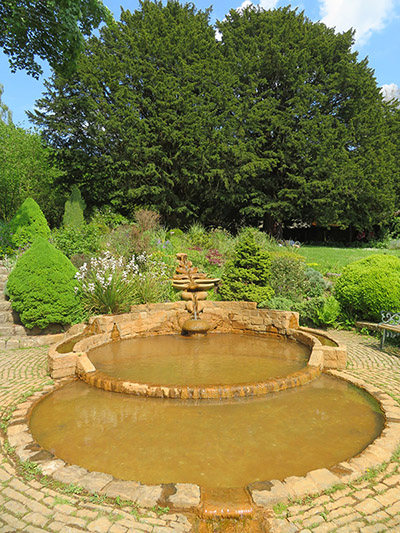
 The official website of Lita-Luise Chappell, writer on sex, magic, food, distant lands, and everyday life with articles, poetry, novels, travelogues, rituals, cookbooks, and short-stories.
The official website of Lita-Luise Chappell, writer on sex, magic, food, distant lands, and everyday life with articles, poetry, novels, travelogues, rituals, cookbooks, and short-stories.
